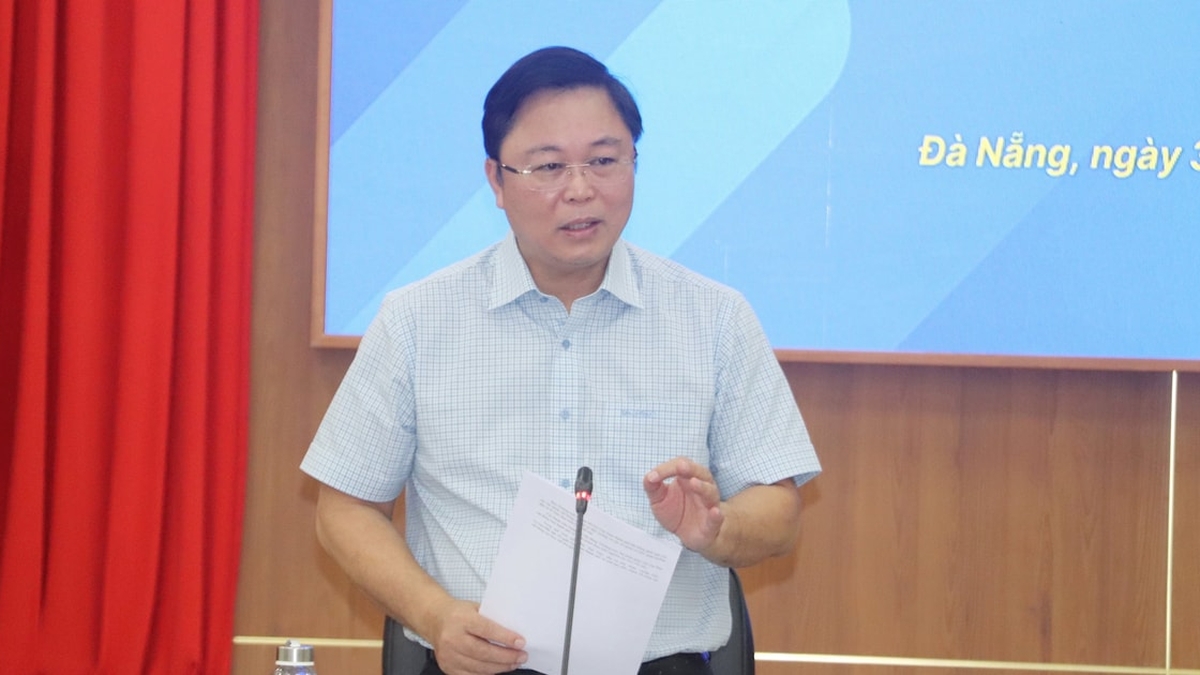From now until 2030, the need for infrastructure investment capital is estimated to reach 245 billion USD, while banks are limited in the ratio of short-term capital used for medium- and long-term loans. Under this pressure, many banks are increasing bond issuance to balance capital sources and ensure liquidity.
Risks of using short-term capital for long-term lending
Mr. Nguyen Hoang Linh, Director of Analysis and Research of Vietcombank Securities Investment Fund Management Company Limited (VCBF), commented that to achieve an economic growth rate of over 9%, the total social investment capital needed by 2030 is nearly 9 million billion VND. Of which, the demand for medium and long-term capital is very large, posing significant risks to the commercial banking system.
According to Dr. Le Minh Nghia, Chairman of the Vietnam Financial Consulting Association, the capital market is an essential part of the financial market, playing a role in mobilizing and effectively allocating resources, thereby creating a material foundation for economic growth. However, in the context of the capital market, especially the corporate bond market, not developing as expected, banks are still playing a leading role in providing capital to the economy .
At the seminar "Credit control mechanism: Replacing limits with safety criteria" last weekend, Mr. Pham Xuan Hoe, General Secretary of the Vietnam Finance Leasing Association, cited data showing that if not counting government bonds, the total outstanding debt from bank credit, the stock market and corporate bonds has exceeded 3 million billion VND, equivalent to nearly twice the GDP.
Meanwhile, at a conference earlier this year, Deputy Governor of the State Bank of Vietnam Dao Minh Tu admitted that bank capital is mainly short-term capital, only suitable for supplementing working capital. However, banks are now taking on the role of the capital market, forced to lend medium and long-term from short-term capital sources.
This issue has been warned by many experts as potentially leading to serious risks, especially when long-term loans are not collected on time. If the repayment cash flow is not guaranteed, the bank will have difficulty paying depositors, thereby creating a risk of illiquidity.
According to VIS Rating's future capital flow report, in the period 2025 to 2030, Vietnam needs about 245 billion USD to invest in highways, high-speed railways and energy projects, while public investment can only meet about 70% of this demand.
Mr. Nguyen Hoang Linh also said that currently most of the capital mobilized by banks has a term of less than 12 months, while the demand for loans usually lasts from 3 to 5 years. Using short-term capital for long-term loans is posing a huge risk of liquidity imbalance.
Therefore, the State Bank has issued circulars tightening the ratio of short-term capital allowed to be used for medium- and long-term loans to minimize risks and ensure system safety.

Strong development of corporate bond market
Capital for infrastructure projects still depends largely on the banking system. Therefore, to meet market demand and ensure financial safety, since the beginning of the year, banks have continued to play a leading role in issuing bonds to supplement medium- and long-term capital and balance liquidity.
According to FiinRatings' corporate bond market report for June and the first 6 months of 2025, the total issuance value in June reached VND105,500 billion, up 52.4% compared to the previous month. Of which, the banking group issued VND189,700 billion in the first half of the year, accounting for 76.3% of the total issuance volume in the whole market. This is the highest level since the beginning of the year, showing the trend of proactively utilizing the bond channel as an extended arm in capital mobilization.
Data from MBS Securities Company also clearly reflects this trend. In June alone, there were 106 new issuances from businesses, with the value overwhelmingly coming from banks. Leading names include ACB with VND24,800 billion in bonds, with terms from 24 to 36 months, interest rates ranging from 4.95 to 5.6 percent. MB issued VND14,700 billion, with terms up to 120 months, interest rates from 5 to 6.48 percent.
According to FiinRatings, the issuance demand is mainly to supplement Tier 2 capital, contributing to improving the capital safety ratio in the context of strong credit growth. In addition, banks must also comply with regulations such as the ratio of short-term capital used for medium- and long-term loans, which is gradually decreasing from 30 to 25 percent according to the roadmap of the State Bank. In addition, credit institutions must also ensure that the ratio of loans to total mobilization is at a safe level, thereby maintaining solvency.
Faced with this pressure, many banks are forced to restructure their capital sources, gradually reducing the use of short-term capital for long-term lending. Issuing bonds with terms from two to ten years has become the optimal solution in the current context.
To reduce dependence on medium- and long-term capital from banks, experts say it is necessary to expand capital mobilization channels and improve investment quality. Dr. Nguyen Tu Anh, Director of the Center for Economic Information, Analysis and Forecasting under the Central Economic Committee, affirmed that an economy cannot develop sustainably if it only relies on the banking system. He emphasized the need to develop the capital market, especially bonds and securities, as a foundation for economic growth.
Experts from FiinRatings believe that recent legal changes are creating momentum for the development of the corporate bond market. Specifically, the bond channel is being adjusted towards more transparency and strictness, including full disclosure requirements, strict issuance conditions and mandatory credit ratings. These changes contribute to strengthening investor confidence and improving market transparency.
As Vietnam ramps up infrastructure investment, experts from VIS Rating believe that credit guarantees and credit ratings will be essential tools to attract private capital. In addition, an upcoming decree will allow public offerings of infrastructure bonds without requiring a financial history. This new regulation is expected to open the door to capital access for infrastructure projects.
Although issuance conditions may be relaxed, post-issuance monitoring measures will be strengthened. These include the establishment of a custodian bank, segregated account management and scheduled disbursement. These measures will create a solid legal foundation for the healthy and sustainable development of the corporate bond market.
Source: https://baolamdong.vn/siet-von-ngan-han-cho-vay-trung-dai-han-ngan-hang-xoay-xo-can-doi-thanh-khoan-384192.html





























![[Photo] National Assembly Chairman attends the seminar "Building and operating an international financial center and recommendations for Vietnam"](https://vphoto.vietnam.vn/thumb/1200x675/vietnam/resource/IMAGE/2025/7/28/76393436936e457db31ec84433289f72)







































































Comment (0)